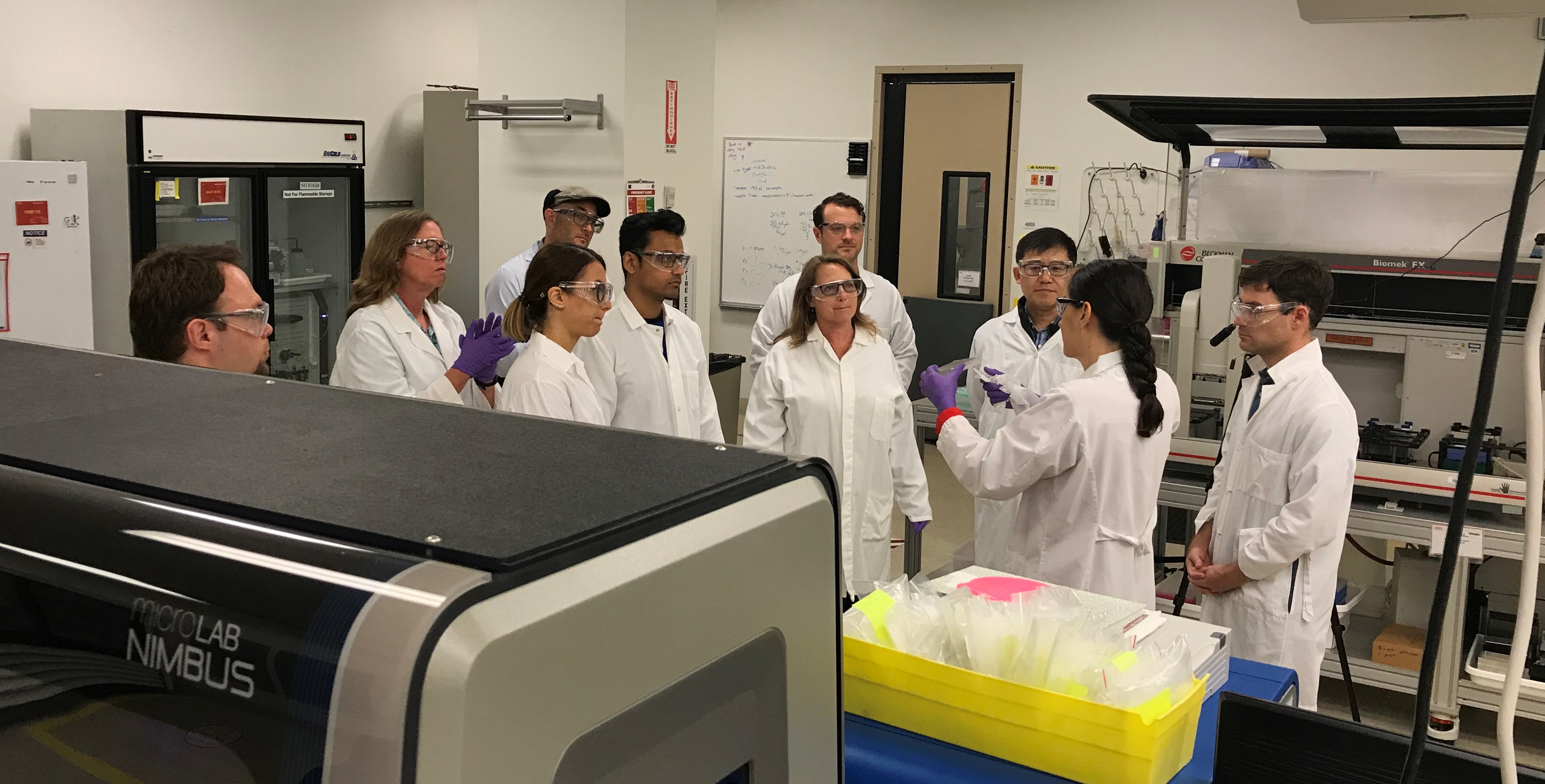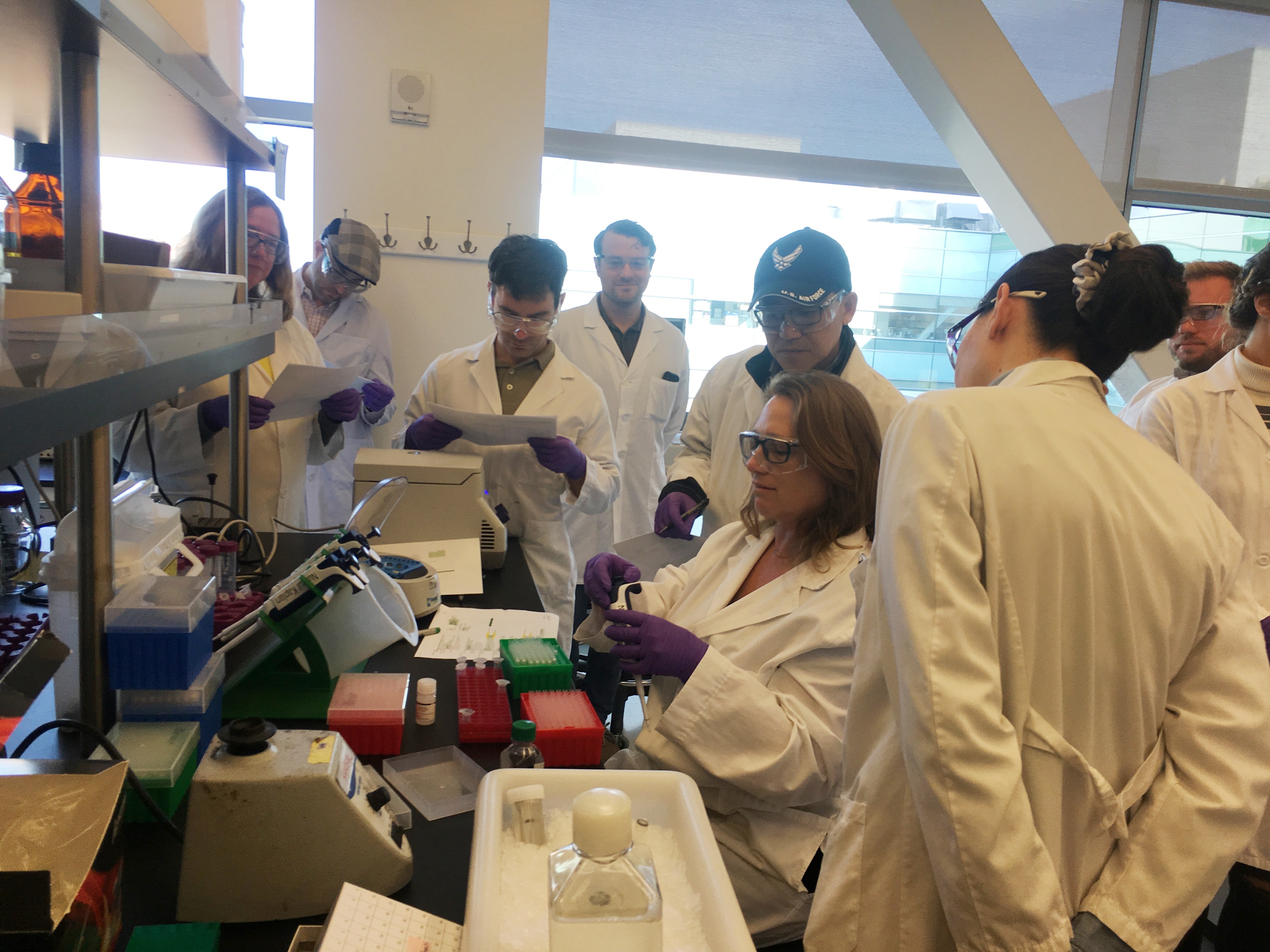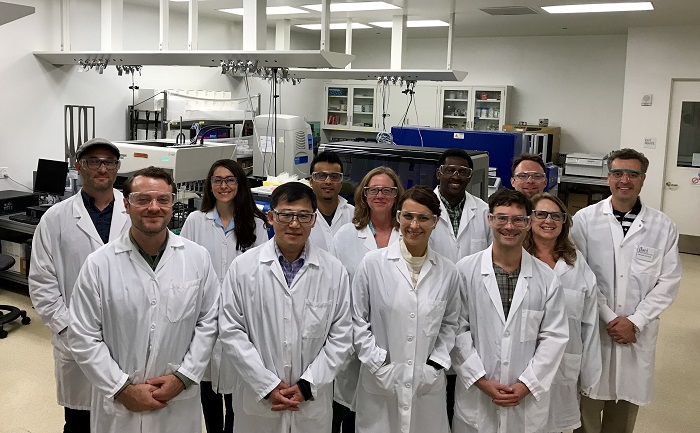-By Irina Silva
The Biosciences Area’s software developers were invited to participate at the third annual Software Developer Wetlab Bootcamp at the Joint BioEnegy Institute (JBEI). Ten participants from Agile BioFoundry, DOE Joint Genome Institute (JGI), JBEI and KBase participated at the training which took place from October 29 to November 2.
Software developers at Berkeley Lab often develop software infrastructure that support, automate, or enhance laboratory operations. “The more hands-on experience the software engineers have with these laboratory operations, the better they can understand them and develop software for them”, said Nathan Hillson, JBEI’s Director of Synthetic Biology Informatics and the organizer of the training. “The WetLab Bootcamp provides just such an opportunity for software engineers to get this hands-on experience, and actually perform the operations that they are supporting.”
Additionally the WetLab Bootcamp is beneficial as it brings together software developers from across the Biosciences Area’s different facilities that may be working in related domains but rarely, if ever, have the opportunity to meet and deepen their professional relationships in person. “The WetLab Bootcamp can be considered a very special job perk that other Bay Area software companies do not offer to their staff. For Berkeley Lab, providing this kind of work experiences helps with staff recruitment and retention.”

WetLab Bootcamp instructors Nurgul Kaplan and Tadeusz Ogorzalek from JBEI’s Synthetic Biology Informatics Group, provided training on how to understand the basics of, as well as perform, a Nextera/MiSeq NGS DNA sequence validation workflow, how to use the Echo acoustic and Biomek liquid handling robotics, how machine learning can help optimize wetlab operations, and finally how MiSeq Data are analyzed, and IGV can be used to visualize results.
For KBase’s Dylan Chivian, one of the trainees, the Bootcamp was very helpful, “The WetLab Bootcamp was really useful for me to get a better sense of the power and limitations of multiplexed sequencing with robotics. All my work is downstream of sequencing, and knowing what goes into the data generation will help me build better tools for analysis of that data. Also, it was fun! Nurgul and Tad were great teachers.”

Lisa Simirenko who also undertook the training and works at JGI’s DNA Synthesis group added, “The people on our team that work in the lab routinely validate the sequences of the constructs that they synthesize. Understanding the wet lab sequencing process, and how the operator interacts with different hardware and software tools will help me design better software to help enable this process”. Simirenko finished the training “with a much deeper understanding of the sequencing process, and the interpretation of the resulting data.”
